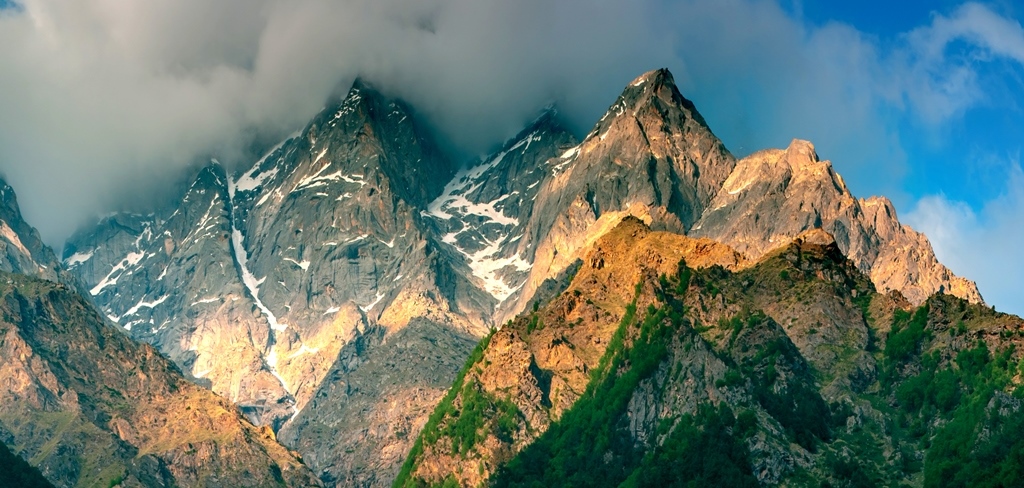Although the youngest mountain range, Himalayas seem as old as the world itself! It is majestic, mystic and mesmerising and has been the subject of innumerable explorations and a part of popular culture for many years now.
Here are some interesting facts about the Himalayas:
- The Himalayan range, as believed by many, was formed some 70 million years ago after a massive collision between the Asian and Indian land masses (tectonic plates). To get an idea about the geology behind this read more here or take a look at this fascinating video!

A depiction of the Himalayas as seen from a satellite - Mount Everest (the highest mountain peak in the world) stands at a dizzying 29,029 feet and is located in the Mahalangur section of the Himalayas. Locally called Sagarmatha (Nepal) and Chomolungma (Tibet/China), it came to be known as Mount Everest after Sir Andrew Waugh, the then Surveyor General of India, decided to name it in honour of his predecessor, Sir George Everest, in 1865.

Moon rising over the Himalayas – mesmerising! - Would you believe it if someone told you that the Himalayas are geologically alive? Yes, they are! It has been proven by several tests performed by geologists over the years. This majestic and gigantic chain of mountains is said to be moving approximately 20mm every year!
- We all know that the Himalayas are the highest mountains in the world. But what’s fascinating is that there are 30 peaks towering over 24,000 feet, and of the 10 highest peaks in the world, nine are located in the Himalayas (Nepal Himalayas). Check out the Everest Base Camp trip!

Annapurna – Nepal Himalayas - The Himalayas abut six countries – India, Nepal, Bhutan, China, Pakistan and Afghanistan – and are about 1,490 miles (2,400 km) in length.
- Sir Edmund Hillary and Tenzing Norgay became the first ever climbers to reach the top of Mount Everest, on 29th May, 1953. Almost 22 years later, Junko Tabei of Japan became the first woman to reach the summit (on 19th May, 1975).
- Some of the world’s major river systems originate in the Himalayas, including the Indus, Ganga-Brahmaputra and Yangtze. These are believed to be older than the Himalayan peaks, and their combined drainage basins are home to some three billion people in 18 countries.

Life in the foothills of the Himalayas - The youngest mountain range on the planet, the Himalayas has served as a natural barrier for thousands of years, forestalling early interactions between India, China and Mongolia.
- The Himalayas have the third largest deposit of ice and snow on the planet, behind Antarctica and the Arctic. At 72 km, the Siachen Glacier is the largest glacier outside the poles. Altogether, there are close to 15,000 glaciers located across the range.

Aerial View of the Himalayas - Everest and many Himalayan peaks – and even the foothills – have attracted thousands of climbing enthusiasts over the last two centuries. Here are details of the Roopkund Trek. According to records, almost 150 people have lost their lives in attempts on the summit, a death rate of 9%.




Comments